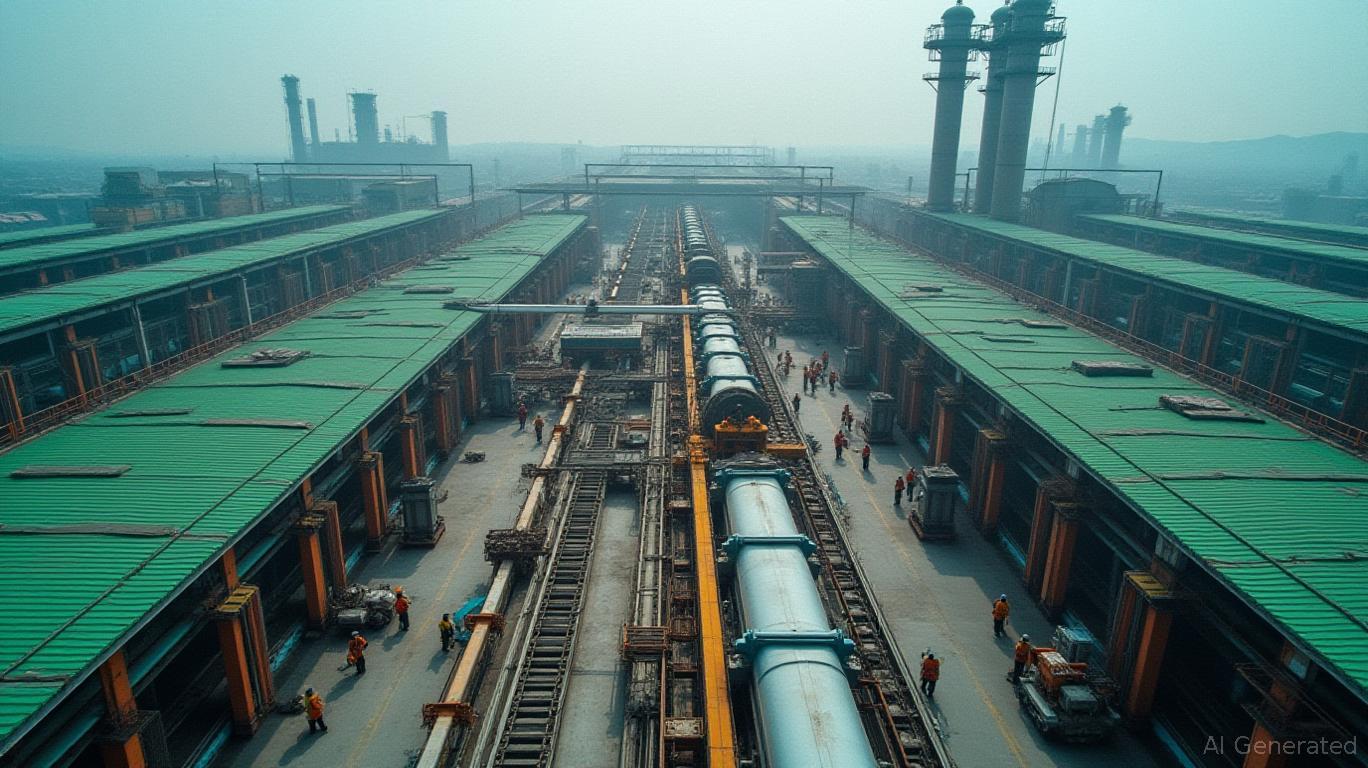Navigating Uncertainty: POSCO Holdings' Valuation and Growth Amid Index Challenges
The S&P International 700 Index serves as a critical benchmark for global investors, influencing capital allocation and liquidity for listed companies. While there is no confirmed evidence of POSCO Holdings' exclusion from the index as of June 2025, persistent challenges in its core steel business—coupled with evolving market dynamics—warrant a deeper analysis of its valuation and growth potential. This article explores how POSCO's operational hurdles, climate strategies, and financial resilience position it amid potential shifts in market sentiment.

Current Challenges: Headwinds in Steel and Beyond
POSCO, a cornerstone of South Korea's industrial sector, faces significant tailwinds. S&P Global Ratings highlighted risks including oversupply from Chinese steel producers, weakening global demand, and operational losses in its secondary battery materials division. Additionally, U.S. tariffs and geopolitical tensions have clouded the outlook for its export-heavy business. These factors, combined with a negative credit outlook from S&P in early 2024, underscore structural pressures on profitability.
The company's exposure to the volatile steel market—where prices have slumped due to overcapacity—is a key concern. Meanwhile, its push into battery materials, aimed at diversifying revenue, has underperformed, with losses reported in this segment. Climate-related risks further complicate its trajectory, as stricter ESG standards could elevate compliance costs.
Resilience Through Decarbonization: A Strategic Pivot
POSCO has responded aggressively to these challenges. The company has committed to transitioning away from coal-based production, investing in green hydrogen technologies and carbon capture systems. By 2050, it aims to reduce its carbon intensity by 90% compared to 2018 levels. This strategy aligns with global decarbonization trends, potentially unlocking new markets and regulatory incentives.
The firm's $1.5 billion investment in a U.S. green steel plant—a joint venture with Tesla—highlights its ambition to capture demand for low-emission products. Such moves could position POSCO as a leader in sustainable steel, a sector projected to grow at 8% CAGR through 2030.
Valuation: A Discounted Multiple Reflects Uncertainty
POSCO's stock currently trades at a P/E ratio of 6.2x, significantly below the industry average of 10.5x. This discount reflects investor skepticism over near-term profitability and concerns about its ability to navigate structural headwinds. However, its debt-to-equity ratio of 1.1x—while elevated—remains manageable given its stable cash flows from core operations.
Comparing POSCO's stock to the S&P International 700 reveals a divergence post-2023, as its share price fell by 22% while the index rose 15%. This underperformance underscores investor wariness, but it also creates a potential buying opportunity if the company executes its turnaround.
Growth Catalysts: Why the Long-Term Outlook Remains Bright
- Demand for Green Steel: As automakers and industries prioritize ESG goals, POSCO's low-carbon products could command premium pricing.
- Diversification Beyond Steel: Its battery materials division, despite current losses, has long-term applications in EVs and renewable energy storage.
- Cost Optimization: Streamlining operations and reducing reliance on volatile raw material imports could stabilize margins.
Investment Considerations: A Balancing Act
While POSCO's valuation appears attractive, risks remain. Near-term profitability hinges on steel prices rebounding and battery divisions turning profitable. Geopolitical risks, such as U.S.-China trade tensions, could also delay recovery.
Recommendation:
- Hold for now: Wait for clearer signs of margin stabilization and progress on green steel projects.
- Consider a gradual accumulation: If the stock dips further below $30 (a 15% downside from current levels), it could offer a compelling entry point.
Conclusion
POSCO Holdings' journey is emblematic of the broader challenges facing traditional industrial giants in an era of climate urgency and global supply chain disruption. While its exclusion from the S&P International 700 remains unconfirmed, the company's ability to pivot toward sustainable growth—coupled with its discounted valuation—suggests resilience. Investors should prioritize patience, monitoring execution on decarbonization and cost controls before committing capital.
In an uncertain market, POSCO's story is one of reinvention. For those willing to bet on its transition to green steel leadership, the rewards could outweigh the risks.

Comments
No comments yet